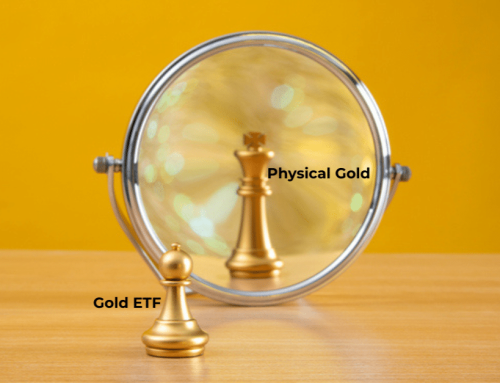Unraveling Gold’s unique strength as No One Else’s Liability
In today’s ever-changing financial landscape, investors are constantly in search of assets that offer true security and resilience. For centuries, gold has held a distinctive place as a trusted investment, primarily because it doesn’t rely on the obligations or solvency of any other entity. The value of gold is entirely independent of the financial stability of governments, corporations, or banks. This characteristic makes gold a reliable safeguard for wealth. In this piece, we’ll examine why gold’s nature as a liability-free asset sets it apart in the world of investments.
The Intrinsic Value of Gold
Gold stands out as a physical, finite asset that holds inherent worth. Unlike other assets whose value may be tied to promises, performance, or policies, gold’s value is grounded in its unique qualities—its rarity, durability, and universal acceptance as a store of wealth. Throughout history, gold has served as both a symbol of wealth and a medium of exchange. This inherent value contrasts with financial instruments like stocks or bonds, which are subject to the credibility or performance of third parties.
Zero Counterparty Risk
One of gold’s most appealing features is its complete freedom from counterparty risk. Counterparty risk refers to the possibility that the other party in a transaction will fail to meet their obligations. With assets such as bonds, stocks, or even fiat currencies, the value is contingent on the ability and willingness of another party to deliver. Gold, however, does not require any promises or guarantees. Its value is entirely independent, meaning it holds worth regardless of the financial health of any other entity. In both prosperous and challenging times, gold’s value remains self-contained, offering unmatched peace of mind for investors.
The Preferred Reserve Asset
This is why central banks and financial institutions across the globe keep gold as part of their reserves. Gold’s detachment from third-party risk makes it a reliable store of value, especially during times of economic turbulence. When financial markets are unstable, or global uncertainty is on the rise, governments and institutions turn to gold because it doesn’t represent a debt claim. Gold often sees price increases during times of crisis, reinforcing its role as a haven for wealth protection. Its ability to maintain and even grow in value during such periods further solidifies its position as a key reserve asset.
Physical Gold vs. Paper Gold
It’s crucial to distinguish between owning physical gold—such as bullion or coins—and holding “paper gold,” like ETFs or gold futures contracts. Physical gold gives the holder direct ownership of the metal itself, ensuring true freedom from liability or risk associated with any third party. In contrast, paper gold represents a claim on gold, but often introduces counterparty risk, as the holder is dependent on a third party to fulfill the contract or deliver the gold. Although paper gold provides liquidity and convenience, it cannot match the security and independence of owning physical gold. For those seeking true security, physical gold is the preferred option.
Basel III: Elevating Gold to a Tier 1 Asset
In recent years, gold’s significance in financial systems has been reinforced by regulations like Basel III, which classifies physical gold as a Tier 1 asset. This designation acknowledges gold as an asset that is as secure and liquid as cash, with none of the risks that come with other financial instruments. Central banks and financial institutions under Basel III recognize physical gold’s value as a secure, liquid asset that provides stability and liquidity in times of market stress without depending on the credit or solvency of any other entity.
A Lasting Store of Value
The notion of gold as an asset free from the liabilities of others is especially important in today’s unpredictable financial environment. As investors navigate growing uncertainties—ranging from inflation to geopolitical tensions—holding an asset that isn’t subject to the performance or obligations of any other party becomes increasingly attractive. Gold’s unique ability to preserve value without counterparty risk, along with its Tier 1 status, cements its role as a critical element in any long-term investment strategy.
For those who prioritize stability and security, physical gold offers a form of ownership that has endured for millennia. Unlike other assets, its value remains intact regardless of external factors. Physical gold grants investors true financial autonomy, free from the entanglements of third-party obligations, making it one of the most dependable assets in times of economic uncertainty.
Disclaimer: This article is for informational purposes only and does not constitute financial or investment advice. Please consult a qualified financial advisor before making any investment decisions.






